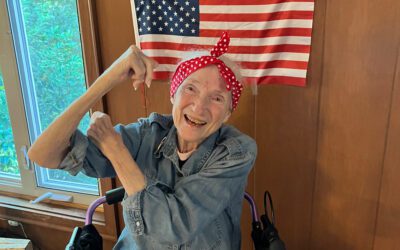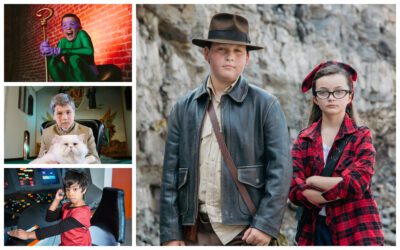[title subtitle=”words: Tonya McCoy
images:courtesy Steven Hunter”][/title]
Dew-dropped wildflowers tilt their petaled heads toward the sun as it rises over the Charleston Prairie in Arkansas. The purple, pink and gold flowers mimic the color of dawn as they dot the field. Photographer Steven Hunter adjusts the macro lens on his Nikon®D700 digital camera. He’s preparing to capture the most minute details of the plants, and this time of day casts the perfect light. Depending on the time of year, his office sits beneath towering ice-encased oaks, or beside bluffs blanketed in autumn colors, or in the midst of American Lady butterflies posed atop spring coneflowers. He’s done lots of jobs in the past, including financial planning, occupational therapy, and even working for the FBI. But, as light floods the field and he snaps shot after shot, he knows he’d rather be here than anywhere else.
“I wouldn’t trade my job with anybody,” says fifty-eight-year-old Steven. His interest began early. When he was a boy he enjoyed flipping through photo albums with his grandmother, who was born in 1907 and grew up on a ranch in Wyoming, near Yellowstone National Park. The albums were filled with pictures of her visiting the park in a Model T and fly fishing in the Big Horn Mountains. “I loved looking at old pictures and listening to the stories she would tell about the adventures with her family.”
When Steven was twelve his parents surprised him with the best gift ever. “I got a little Kodak® Instamatic camera for Christmas and I became the official family photographer. I took all the family pictures. I took pictures of family and friends up until about the time I got married. And my wife and I, we liked to go camping and hiking, so I started taking pictures of nature just to record what we were doing.”
When Steven was younger, he also thought it would be exciting to be an FBI agent, and the dream didn’t end there. After a few semesters at Westark Community College (now the University of Arkansas – Fort Smith), he decided to apply for a position at the FBI headquarters in Washington D.C. He went through an extensive application and interview process and landed a job sending fingerprint cards to law enforcement agencies all over the United States. Eventually he wanted to become a special agent, but shortly after being hired, the FBI ended their policy that favored promoting existing employees for those openings. The edge Steven thought he’d have by working at headquarters was gone. Steven decided to move back home.
Once back in the state, he finished college at the University of Arkansas in Fayetteville, earning a Master of Business Administration degree. From there he worked for financial planners in both Chicago and Fort Smith, but his heart just wasn’t in it, so he decided to change course again.
At thirty-two, he started back to school, this time for occupational therapy, and moved to Missouri where he had a wide range of clientele including patients in public schools, nursing homes, inpatient and outpatient rehabilitation and home health services. He was working long hours for several different bosses. “I really liked the work, but I just got burned out after ten years. It was pretty stressful. It was long hours and a lot of pressure, and I really wanted to be a nature photographer.”
After burning out, Steven began to work on his dream. His classroom became the mountains, fields, and trails, and he became his own teacher. He picked up every book he could find about photography and started building a library at home. He spent hours voraciously poring over books and trying different techniques. He only took one hands-on photography class, which was a workshop with renowned photographer Tim Ernst. Ernst’s work is published in several state guidebooks and photography books including Arkansas Landscapes and Arkansas Wildlife. Steven drove from Missouri to Arkansas to take photos under Ernst’s direction at White Rock Mountain.
He returned to Arkansas in 2000 where he continued photography while working for his father who’d started a payphone business. Steven did everything from installing to programming the phones.
One day tragedy struck when Steven was installing a phone line on top of the laundromat of an apartment building. His dad’s truck was below and Steven thought it would be easy to jump from where he was to the pickup bed.
“I landed wrong, and it jarred my back really hard. It hurt really bad. By the time March of 2001 came around, I was completely incapacitated and I didn’t have health insurance. ..I was laid up for three solid months. I spent them flat on my back in bed. I lost all my savings. I was broke and I became really depressed about the whole thing.
“When I was flat on my back, I didn’t even know if I’d be able to walk again. I finally had an MRI and it was really bad. I’d herniated three discs and one of them was a worst case scenario: it herniated out the side. To this day — my right leg, I still don’t have full strength in it.”
Steven’s doctor prescribed bed rest and told him he’d have to change his lifestyle, meaning he wouldn’t be able to lift anything heavy and would have to take several breaks during the day to rest his back. His depression grew worse.
“While I was laid up, I prayed to God, ‘If you heal me enough to where I can walk again, I’ll do nature photography. That’s my heart’s desire anyway. That’s what I really want to do.’
“It’s kind of like God closed all the doors, but left that one door open. And that was the only place to go was to pictures. That’s what was in my heart, so I started doing it, and that’s what made me feel most alive, being out there in the field, taking pictures of plants and animals and landscapes that are beautiful. And for a while the demons of depression would be held at bay. And if I was really into it, I didn’t notice my back pain as much.”
Steven was able to work on his photography by taking breaks when he needed to. Often he would lie flat on his back, right on the ground, until the pain subsided. Photo by photo, he gathered two decades’ worth of work and published two books. His first book, Looking for the Light, is focused on the landscapes and natural beauty of Mt. Magazine. His second book, Graced by the Light, is centered around the Charleston Prairie.
Steven found his way out of darkness through photography and by the help of God. “There was one day when I was at the prairie. It’s so beautiful out there and I was all alone and I just kind of had an epiphany. I just felt like I’d been singled out by God that day to be blessed with the light. Both the physical light coming from the sun and the inner light as well: your spirit… I was looking for the light. Literally and metaphorically. Going through that really changed my life forever. I think for the rest of my life, seeking out the light is the theme. Whether it be through the Word of God, or through prayer, or through nature and the light that we see.”
Every day, Steven is happy that his work takes him to beautiful places, filled with nature. He can’t imagine a better life, or a happier one, and every day he is grateful that this is what he gets to do. He looks back on his first camera, the first time he fell in love with photography, and he thinks this is what he was born to do. That it took him awhile to find it is fine with him. It only makes him treasure it more.
You can buy Steven Hunter’s books on Amazon or you can log on to www.lookingforthelight.net.




